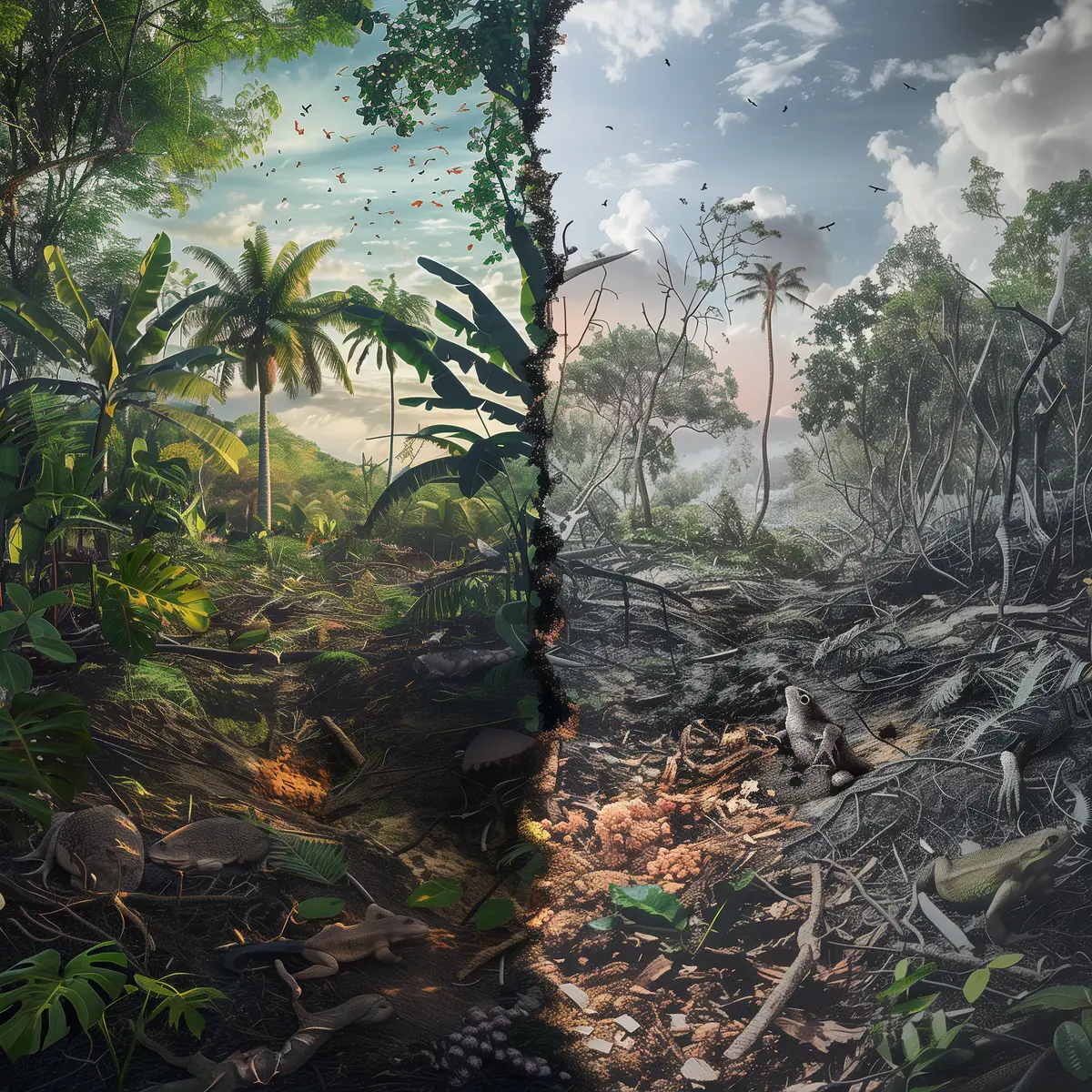How to write your Research Proposal (Short)
We include this 17 page layout with every Proposal Pack. If you want this template to have a different visual design theme than the one illustrated here, purchase any Proposal Pack design and create this template using the purchased design theme. This template is included in every Proposal Pack. If you get a Proposal Pack or the Professional, you can also make any variation of this template with different chapters to suit your needs.
We typically include more chapters in the templates than most people will need to give everyone more variety in the chapters they may need. You can trim down a long template by removing pages you do not need or combining multiple chapter topics into one page.
 DOWNLOADABLE, ONE-TIME COST, NO SUBSCRIPTION FEES
DOWNLOADABLE, ONE-TIME COST, NO SUBSCRIPTION FEESThis sample proposal is based on the same layout as this template and is included in every Proposal Pack. The visual design of the templates will match whichever Proposal Pack design you purchase. To get this template in a different design theme than shown in the sample, purchase any other Proposal Pack design theme and this template will be included.
You can create an editable Word version of this sample in any design theme of your choice including branded to your logo.
You can also create countless variations of this document to suit your needs using the included library of 2200+ chapters if ordering a Proposal Pack or Professional.
 What Our Clients Say
What Our Clients SayIt was a bit challenging at first to get the product to provide the exact functionality i was looking for, simply because it is so comprehensive. But after I got the hand of it, I found it to be extremely useful."
Premiere Marketing, LLC
Related Article
Related Video
Related Templates
- Extinction and Climate Change Study
- Climate Change Research Proposal
- Research Assistant Proposal
- Medical Research Project Funding Proposal
- Artificial Intelligence Project Funding Proposal
- Drug Synthesis Project Funding Proposal
- Research Funding Request Proposal
- Medical Clinic Project Proposal
- In-House Lab to Save Costs and Protect Trade Secrets Proposal
- Logistics Research Project Proposal
- International Research and Development Project Proposal
- Research Expedition Grant Funding Request
- Research Proposal (Long)
- Quote (Short)
- Feasibility Study and Analysis
- Population Migration Due to Climate Change Study
- Micro Business Proposal
- PhD Thesis Proposal
What's the best way to write your short research proposal?
Using the Proposal Kit template and software package is a proven solution for writing a research proposal, thanks to its comprehensive template library and Wizard software. Using a line item quoting database system, these tools help users integrate various topics, such as cost summaries, quotes, estimates, budgets, and other financial issues.
Do you need to write a research funding proposal? The Proposal Kit is designed specifically for you. It simplifies the proposal writing process, enabling you to focus on creating a persuasive document to win the funding you need.
What Types of Projects Are Short Research Proposals Written For?
Research proposals are documents used in various projects where funding or approval is sought for research on multiple issues. Here are some examples of the types of projects typically undertaken:
- Investigation of air pollution reduction strategies
- Analysis of renewable energy sources and implementation
- Study of climate change mitigation techniques
- Research on the impact of deforestation
- Exploration of sustainable agriculture practices
- Examination of water conservation methods
- Development of wildlife protection programs
- Evaluation of waste management systems
- Assessment of green building technologies
- Scrutiny of ocean pollution control measures
- Appraisal of soil erosion prevention techniques
- Inquiry into the effects of urban sprawl
- Survey of Biodiversity Preservation Efforts
- Review of alternative transportation solutions
- Analysis of Noise Pollution Control Methods
- Study of carbon footprint reduction strategies
- Examination of sustainable fisheries management
- Investigation of invasive species containment
- Exploration of eco-friendly consumer products
- Development of environmental education programs
Chapters this template is built with
There is no one-size-fits-all template that suits every research proposal project. However, the Proposal Kit software allows users to create customized templates for all situations. Here are examples of chapters that can be tailored using the Proposal Kit's extensive content library of thousands of chapters.
Cover Letter
The cover letter introduces the proposal to potential funders or stakeholders. It sets the stage and briefly overviews the research project's goals and importance. Specifically, in a research proposal for environmental issues, the cover letter can highlight the urgency and societal relevance of the research, encouraging stakeholders to engage with the proposal.
Problem Statement
This section outlines the specific environmental issue the research project aims to address. It sets the stage for the necessity and relevance of the research. By clearly defining the problem, researchers can demonstrate the significance of their work and its potential impact on resolving pressing environmental challenges.
Abstract
The abstract concisely summarizes the proposal, highlighting key components like objectives, approach, and expected outcomes. In a research proposal focused on environmental studies, the abstract can attract attention by emphasizing innovative techniques and the potential for meaningful contributions.
Expected Results
Here, the anticipated outcomes of the research are detailed, along with the impact these results could have on the environmental problem being studied. This section can illustrate the tangible benefits of the research, such as improved environmental policies or technological advancements, fostering stakeholder interest and support.
Hypothesis
This section articulates the hypothesis or central research question that the study seeks to answer. In environmental research, a well-defined hypothesis can guide the investigation and is crucial for clearly communicating the study's direction and potential breakthroughs.
Modeling
In modeling, the proposal outlines the frameworks or systems that will be used to simulate or analyze the research data. For environmental studies, this could involve using models to predict climate change impacts or simulate ecosystem interactions, providing a basis for data-driven decision-making.
Approach
The approach section describes the methodology and procedures used to conduct the research. A detailed approach in an environmental research proposal can highlight innovative data collection methods, experimental designs, or collaborative efforts, showcasing the project's robustness and feasibility.
Resource Allocation
This section details how resources such as funding, personnel, and equipment will be distributed and used throughout the project. For an environmental research proposal, clear resource allocation can demonstrate efficient use of funds, optimizing the project's potential for successful outcomes.
Timeline
An organized timeline provides a schedule of key milestones and deadlines throughout the research project's duration. In an environmental study, the timeline can illustrate the project's phases, from initial data collection to final analysis, helping stakeholders understand the pacing and progress of the research.
Literature Review
The literature review surveys existing research and publications relevant to the proposal, establishing the study's scholarly context. A thorough literature review in environmental research can identify gaps in current knowledge and position the proposed study as an essential next step in advancing the field.
Evaluation
Evaluation criteria are set here to assess the effectiveness and success of the research project. For environmental proposals, specific metrics such as reduction in emissions or improved water quality can be defined, enabling a clear assessment of the project's impact.
Budget Information
This section breaks down the financial topics, including projected costs and funding allocation, which are important for securing support. In an environmental research proposal, a clear budget can reassure funders of prudent financial planning and the potential for a high return on investment in terms of environmental benefits.
Project Summary
The project summary briefly reviews the research objectives, methodologies, and expected contributions to solving the environmental issue. It is a capstone to the proposal, reinforcing the study's significance and the researcher's capability to deliver meaningful results.
Definitions
Definitions clarify any technical terms or jargon used within the proposal, ensuring the document is accessible to a broad audience. In environmental research, providing clear definitions can help bridge the gap between scientific language and public understanding, enhancing the proposal's readability and appeal to non-experts.
Use cases for this template
Securing Funding for Urban Development's Environmental Impact
The Challenge
Sarah, a project manager at GreenFuture Consultants, was charged with securing funding for an environmental impact study related to an urban development project. The city council, responsible for approving the development, required a comprehensive understanding of the project's environmental implications. Sarah's challenge was to convey the necessity and urgency of this study in a manner that would persuade the council to back the initiative financially.
The Solution
Recognizing the complexity of her task, Sarah turned to Proposal Kit for assistance. The software provided her with specialized chapters tailored for environmental studies, equipped with sections designed to address key concerns of stakeholders. The Word based design enabled Sarah to integrate dynamic data, in-depth literature reviews, and a detailed timeline aligned with the council's specific expectations.
The Implementation
Sarah customized the proposal using Proposal Kit's flexible chapters, ensuring that every document topic met the city council's requirements. She created an abstract that briefly captured the project's core objectives and a detailed problem statement that outlined potential environmental impacts. These carefully constructed sections demonstrated the study's importance and necessity.
The Outcome
The well-structured and persuasive proposal was instrumental in securing the much-needed funding from the city council. With financial support, GreenFuture Consultants progressed with the environmental impact study, enabling them to provide informed recommendations. This step advanced the urban development project and ensured that ecological considerations were thoroughly evaluated and addressed.
Fast-Tracking Approval for a Renewable Energy Project
The Challenge
James, a sustainability officer at SolarWave Innovations, was under pressure to develop and submit a proposal for a groundbreaking renewable energy initiative. The deadline was approaching, and the stakes were high. The company needed to present a detailed and persuasive proposal to secure funding and stakeholder buy-in for its ambitious project.
The Solution
In search of an efficient solution, James opted for Proposal Kit to aid the proposal writing process. The software's comprehensive templates and ability to be integrated with AI writing tools provided the perfect platform for James to generate high-quality content quickly. Using AI to analyze SolarWave's website, James could extract relevant information and write targeted sections of the proposal, enhancing speed and accuracy.
The Implementation
James used the Proposal Kit to organize the proposal systematically. He relied on AI tools to help write crucial sections, such as the abstract and expected results, ensuring these components were informative and engaging. By efficiently managing his time and resources, James met the tight deadline without compromising the quality and impact of the proposal.
The Outcome
The proposal's clarity and thoroughness impressed stakeholders, leading to the initiative's approval and securing the necessary funding. James's ability to deliver a comprehensive proposal under pressure showcased the value of using Proposal Kit, ultimately advancing SolarWave Innovations' efforts in renewable energy development.
Partnering for Biodiversity Conservation Success
The Challenge
Emma, the director at EcoShield, a non-profit organization focused on environmental preservation, faced a significant hurdle. She needed to write a Request for Proposal (RFP) to attract capable partners for an upcoming biodiversity conservation project. The complexity of the project and the necessity for the right collaborators made creating an effective RFP a challenging endeavor.
The Solution
Emma turned to Proposal Kit to develop a detailed RFP. The software's extensive templates allowed her to customize the document to reflect EcoShield's goals and the critical nature of the project. By highlighting the significance of preserving biodiversity, Emma aimed to capture the attention of potential partners who shared EcoShield's mission and values.
The Implementation
Emma created the RFP using Proposal Kit's extensive library. She included important sections on resource allocation and evaluation criteria, ensuring the document was comprehensive and clear. By focusing on these key components, Emma provided a clear framework for potential partners to understand the project's scope and requirements.
The Outcome
The well-written RFP attracted multiple strong candidates, allowing EcoShield to collaborate with reputable organizations. This partnership enabled them to advance their biodiversity conservation efforts, underscoring the effectiveness of using Proposal Kit to convey complex project requirements and attract suitable collaborators.
Conclusions and Recommendations
Creating a successful research funding proposal can be simplified with the right tools. Proposal Kit offers a comprehensive solution for creating well-organized, professional documents using its extensive template library and Wizard software. This guidance is proven to help tailor proposals to specific needs, ensuring all necessary topics like budgeting, timelines, and objectives are articulated.
Also Known As
This template may also be referred to in different ways or be used in more specialized situations, such as:
- Research Funding Proposal
- Feasibility Study Proposal
- Environmental Proposal
- Research Grant Proposal
- Study Funding Request
- Proposal for Research Study
- Short Research Proposal
- Funding Request Proposal
- Feasibility Research Proposal
- Environmental Study Proposal
Abstract
 A well-written research proposal is a tool for securing funding and approval in various academic and professional contexts. At its core, a good research proposal concisely presents a research problem, outlines specific aims, and suggests a robust research design. Researchers must look into relevant theories, conduct thorough data analysis, and consider ethical considerations to write research proposals.
A well-written research proposal is a tool for securing funding and approval in various academic and professional contexts. At its core, a good research proposal concisely presents a research problem, outlines specific aims, and suggests a robust research design. Researchers must look into relevant theories, conduct thorough data analysis, and consider ethical considerations to write research proposals.
An optimal proposal length allows for a brief yet comprehensive summary, balancing a clear introduction with a detailed discussion of the proposed research's methodology and expected outcomes. In disciplines like the social sciences, qualitative methods such as interviews and questionnaires can provide valuable insights into the subject matter.
Students and scientists alike must understand how to format a proposal, ensuring each section, from background to evaluation, contributes to the proposal's overall persuasiveness. The abstract serves as an initial pitch, summarizing the research's objectives and potential contributions to the field. A university's academic standards often dictate the research proposal length and the degree of detail required in sections such as the literature review and budget information. Effective proposals also outline resource allocation and provide a timeline for completion, capturing the interest of supervisors and potential funders.
 Institutions may require citations and a bibliography to support the claims made in the proposal, ensuring the research is grounded in existing academic work. By addressing these components and aligning with institutional guidelines, a research proposal can achieve its goal of securing support. Tools like Proposal Kit facilitate the process of proposal writing by offering an extensive library of customizable templates and automated quoting systems. These features help researchers efficiently organize their ideas and present a case for their proposed study, ultimately contributing to the advancement of knowledge in their respective fields.
Institutions may require citations and a bibliography to support the claims made in the proposal, ensuring the research is grounded in existing academic work. By addressing these components and aligning with institutional guidelines, a research proposal can achieve its goal of securing support. Tools like Proposal Kit facilitate the process of proposal writing by offering an extensive library of customizable templates and automated quoting systems. These features help researchers efficiently organize their ideas and present a case for their proposed study, ultimately contributing to the advancement of knowledge in their respective fields.
Developing a concise yet comprehensive research proposal is important for academic and professional success, offering a structured way to present your research method, objectives, and anticipated outcomes. A well-prepared proposal can determine the allocation of resources, including money, by clearly explaining the project's significance and feasibility. This is especially crucial for students who may be seeking funding or approval from professors or academic committees.
Proposal Kit stands out as an invaluable tool in this process due to its ability to streamline research proposal writing. It offers extensive content libraries that include example research proposals and templates for each section of the document. From creating a brief summary to providing detailed descriptions, these resources help guide users in creating effective proposals. The software's design supports users in citing relevant references and incorporating theoretical frameworks, thereby ensuring the proposal's scholarly integrity.
 For participants in social sciences or other disciplines, the Proposal Kit aids in defining the research problem and creating a thesis statement that succinctly captures the study's aims. Users can test different approaches by customizing templates to fit the specific needs of their project, whether they are addressing complex environmental issues or conducting investigations in other fields. This flexibility is critical in allowing researchers to access the most appropriate format for their proposal.
For participants in social sciences or other disciplines, the Proposal Kit aids in defining the research problem and creating a thesis statement that succinctly captures the study's aims. Users can test different approaches by customizing templates to fit the specific needs of their project, whether they are addressing complex environmental issues or conducting investigations in other fields. This flexibility is critical in allowing researchers to access the most appropriate format for their proposal.
The Proposal Kit assists in the publication process by helping users prepare documents that can be easily adapted for journal submission or other published formats. Providing all the necessary components, including suggestions for figures and article layouts, ensures that the proposal is complete and ready for evaluation. Instructors, students, and professionals can all benefit from the software's capabilities, which align with diverse academic philosophies and standards.
The Proposal Kit not only simplifies the mechanics of proposal writing but also enriches the planning of research projects. By enabling users to clearly define their research aims, allocate resources efficiently, and present their findings persuasively, it enhances the overall quality of research proposals. Whether you're writing for a class assignment or seeking to publish a comprehensive study, this tool helps ensure your proposal's success.
 Creating a research proposal involves more than just presenting data; it is about telling a convincing story that reflects the research's significance and potential impact. A concise summary at the beginning of the proposal helps capture the audience's attention by succinctly outlining the study's main objectives and expected contributions. This summary serves as a roadmap, guiding readers through the complex narrative of the research.
Creating a research proposal involves more than just presenting data; it is about telling a convincing story that reflects the research's significance and potential impact. A concise summary at the beginning of the proposal helps capture the audience's attention by succinctly outlining the study's main objectives and expected contributions. This summary serves as a roadmap, guiding readers through the complex narrative of the research.
Incorporating a theoretical framework is important in grounding the research within an established body of knowledge. By citing relevant literature and theories, researchers can situate their work in a broader academic context, adding credibility and depth to their proposal. This approach not only strengthens the proposal but also demonstrates the researcher's familiarity with existing studies and theories, which is often an important evaluation criterion for supervisors and funding bodies.
The process of writing a research proposal also involves investigating existing gaps in the literature and identifying areas where new insights can be obtained. This investigative approach allows researchers to formulate specific research questions or hypotheses that address these gaps, thereby advancing the field. In doing so, the proposal not only seeks to obtain funding or approval but also aims to contribute meaningfully to ongoing scholarly conversations.
 Engaging with the philosophy of research, the Proposal Kit facilitates the organization of these complex topics into a cohesive document. Its tools assist researchers in integrating diverse components into a well-structured proposal that resonates with academic and professional audiences. By offering templates and guidance on how to present their research story, Proposal Kit ensures that proposals are not only informative but also compelling, maximizing the chances of success.
Engaging with the philosophy of research, the Proposal Kit facilitates the organization of these complex topics into a cohesive document. Its tools assist researchers in integrating diverse components into a well-structured proposal that resonates with academic and professional audiences. By offering templates and guidance on how to present their research story, Proposal Kit ensures that proposals are not only informative but also compelling, maximizing the chances of success.
Ultimately, a well-written research proposal achieved through thoughtful planning and the use of an effective Proposal Kit serves as a vital step in the research journey. It lays the foundation for a study that is not only methodologically sound but also rich in theoretical and practical insights, paving the way for new discoveries and advancements in the field.
Frequently Asked Questions
What are the key components that need to be included in a short research proposal?
A research proposal typically includes several key components that help articulate the research plan clearly. These components generally consist of a cover letter that introduces the proposal, a problem statement that identifies the issue being addressed, a methodology section outlining the research approach, a timeline indicating key milestones, and budget information detailing the financial topics. Including these sections ensures the proposal is comprehensive and provides all necessary details to stakeholders or potential funders.
How can I ensure my short research proposal is persuasive and effective?
To make a research proposal persuasive, it's crucial to clearly define the research question or hypothesis and demonstrate the significance of the study. Providing a thorough literature review establishes a scholarly context, while a well-documented methodology speaks to the feasibility of your approach. Additionally, articulating expected results and their potential impact strengthens the proposal's persuasive power. Tools like Proposal Kit can further enhance the proposal's professionalism and clarity, making it more compelling to readers.
What common mistakes should I avoid when writing a short research proposal?
One common mistake in writing a research proposal is failing to define the research objectives or the problem statement clearly. Without a clear focus, the proposal may appear unfocused or lack direction. Another mistake is omitting a detailed budget, leading to questions about financial viability. Additionally, paying attention to including a timeline can leave readers unsure about the project's timeframe. Ensuring these topics are well-defined and using structured templates from tools like Proposal Kit can help avoid these pitfalls.
How detailed should the budget section be in a short research proposal?
The budget section in a research proposal should be detailed enough to outline the project's financial requirements clearly. It should include an itemized list of anticipated expenses, such as personnel, equipment, materials, and travel expenses. Providing justifications for each budget item can further enhance credibility. A well-prepared budget demonstrates careful planning and shows potential funders that you have considered the financial topics of the research.
Can I use a short research proposal template for different types of projects?
Yes, a research proposal template can be adapted for various projects. While the core components, such as the cover letter, problem statement, and methodology, remain consistent, the content within these sections can be customized to fit the unique topics of different research topics. Tools like Proposal Kit offer extensive libraries of flexible templates, allowing you to tailor the proposal to meet each project's specific needs and objectives, whether it's a feasibility study, environmental research, or another area of interest.
20% Off Discount
![]() Add To Cart This Word Template
Add To Cart This Word Template
 Add To Cart Proposal Pack Outdoors #5
Add To Cart Proposal Pack Outdoors #5
 Add To Cart Proposal Kit Professional
Add To Cart Proposal Kit Professional
 4.7 stars, based on 849 reviews
4.7 stars, based on 849 reviewsProposal Kit chapters used in this template
Cover Letter, Title Page, Table of Contents, Problem Statement, Abstract, Expected Results, Hypothesis, Modeling, Approach, Resource Allocation, Time Line, Literature Review, Evaluation, Budget Information, Project Summary, Definitions, Back Page
Line Item Automated Chapters
If you purchase a Proposal Pack or the Professional Bundle, these proposal pages are generated using an automated line-item database in the included Wizard software.
Time Line
You use this proposal for
- Non-technical proposal
- Project pitch proposal
- Non-government grant, non-profit, NGO proposal
- Nature, environmental proposal
- Research proposal
How to create this template with Proposal Pack Wizard
You can create this document using any of the logo-designed Proposal Packs. Pick any Proposal Pack with a logo design theme you like best; they will all work equally well. The Proposal Pack for Any Business is the pack with no extra added logos or colors - designed to be used plain or for you to customize with your logos and graphics.
The Proposal Pack design theme you purchase will determine the visual look of this template. The screenshot above only shows the plain generic design theme.
We include a library of chapters to be assembled based on your needs. All proposals are different and have different needs and goals. We designed Proposal Pack so you can customize the documents to suit your needs.
You will best create this document using the Proposal Pack Wizard - Expert Edition software to select this template and build it in the Proposal Pack logo design theme of your choice along with any desired customizations (such as adding additional chapters, removing unneeded chapters, changing the order of chapters, and importing your company logo). This template outlines a proposal for the described situation. Each user is responsible for typing in the actual content of the provided pages with their information to complete the proposal. Suggestions in the abstract may include features in higher-end packages and are facilitated by the selection of chapter templates to support the narrative of each proposal, which help guide the user in filling in the details.
The Wizard software's AI Writer will write the content of the pages of the template based on details provided for your company, client, project, financial details and other writing instructions. This will provide a personalized version of the template completely written and ready to edit.
Once finished, the AI Writer's Word-to-PowerPoint converter can transform your proposal, business plan, or other business documents into a PowerPoint slideshow. Save time and effort by letting the AI analyze every chapter to condense its content into talking points, visually matching the document, and providing a consistent package of presentation material with the click of a button.
You create this template using the Wizard software with an entire Proposal Pack library and software. We include the Expert Edition of the software in the Proposal Kit Professional. Microsoft Word for Windows is required to use the customizing software. You can also edit Word document templates in other office software such as Word for Mac. We will assist Mac users in assembling complex templates for their first project if they do not have the required platform to run the Wizard software.
How to Build Templates Featured on Proposal Kit Website
Many people find the Proposal Kit website after searching for a specific proposal. Once you've purchased and installed the software, how do you build that template you found in the first place? This video shows you how to build any proposal you see on the Proposal Kit website.
 Ian Lauder has been helping businesses write their proposals and contracts for two decades. Ian is the owner and founder of Proposal Kit, one of the original sources of business proposal and contract software products started in 1997.
Ian Lauder has been helping businesses write their proposals and contracts for two decades. Ian is the owner and founder of Proposal Kit, one of the original sources of business proposal and contract software products started in 1997.By Ian Lauder
 Published by Proposal Kit, Inc.
Published by Proposal Kit, Inc.


 Cart
Cart
 Get 20% off ordering today:
Get 20% off ordering today: -1200.webp)
-760.webp)

 Facebook
Facebook YouTube
YouTube Bluesky
Bluesky Search Site
Search Site